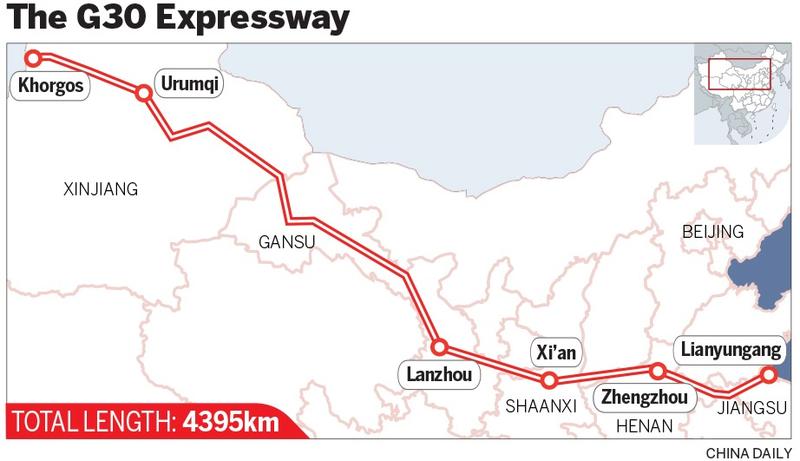 Vehicles run on the G30 highway along the Sayram Lake in Northwest China's Xinjiang Uygur autonomous region, May 8, 2017. (PHOTO / XINHUA)
Vehicles run on the G30 highway along the Sayram Lake in Northwest China's Xinjiang Uygur autonomous region, May 8, 2017. (PHOTO / XINHUA)
The 4,395-kilometer-long Lianyungang-Khorgos Expressway, also known as the G30 Expressway, which stretches across the country from Lianyungang in East China's Jiangsu province to the China-Kazakhstan border at Khorgos in the Xinjiang Uygur autonomous region, is the longest contiguous expressway in China.
Passing through Jiangsu and Anhui provinces in East China, Central China's Henan province and Northwest China's Shaanxi province, Gansu province and Xinjiang, it was opened to traffic on Dec 31, 2014. It goes across varied topographies including plains, plateaus, mountains and deserts.
There's a considerable overlap between the expressway's sections in Gansu province and Xinjiang and the Hexi Corridor, the main artery on the ancient Silk Road.
Today, the G30 Expressway, as a main road for the new Eurasian Land Bridge, plays an important role in boosting trade cooperation and cultural exchanges under the framework of the Belt and Road Initiative.

Additionally, its 1,421 kilometers in Xinjiang connect Hami, Turpan, Urumqi, Shihezi, Kuitun, Wusu, Bole and other cities in Xinjiang, which covers around one-third of the expressway's overall length. Sixteen tunnels and more than 1,500 bridges have been built for the highway to go either over or underneath obstacles across the complex topography in the region.
It's an important basic infrastructure that plays a key role in improving the region's transport capability, fueling economic development, vitalizing the tourism industry and strengthening China's ethnic unity.
Over recent years, the expressway's sections in Xinjiang, including the Urumqi-Kuitun section and the Xiaocaohu-Urumqi section, have been upgraded from four-lane freeways to eight-lane freeways, remarkably lifting its capacity.
By the end of last year, the overall length of highways in Xinjiang exceeded 5,500 kilometers, forming a treelike network where the G30 Expressway serves as the trunk. This year, the region will invest 60 billion yuan to construct transportation infrastructure and expand the highways to a length of over 6,000 kilometers, according to Xinjiang's transport department.
Contact the writers at xingwen@chinadaily.com.cn


